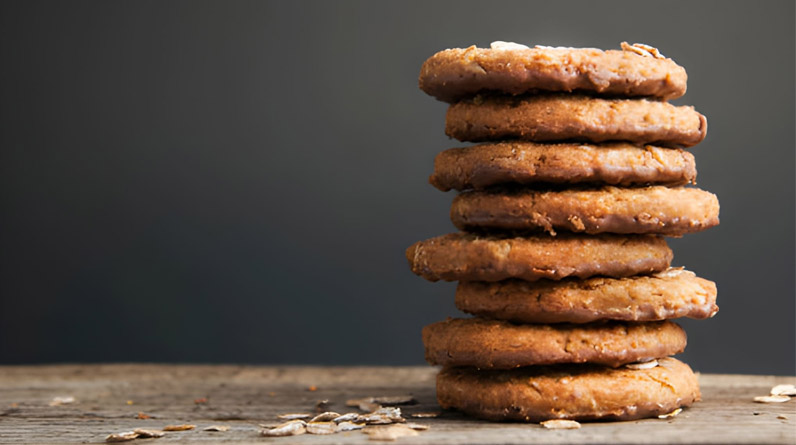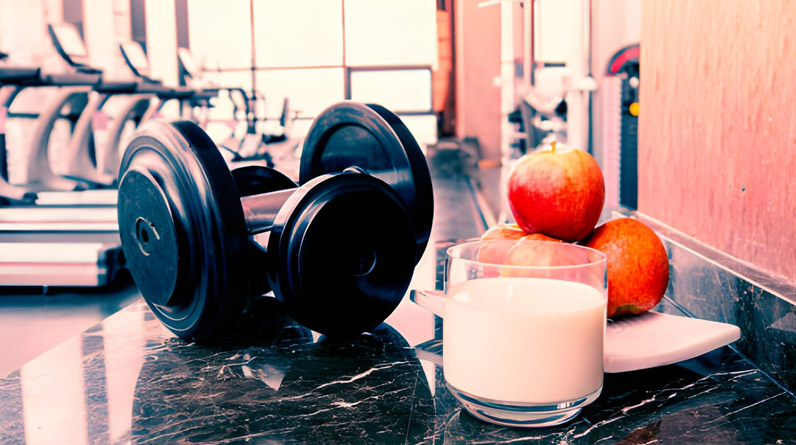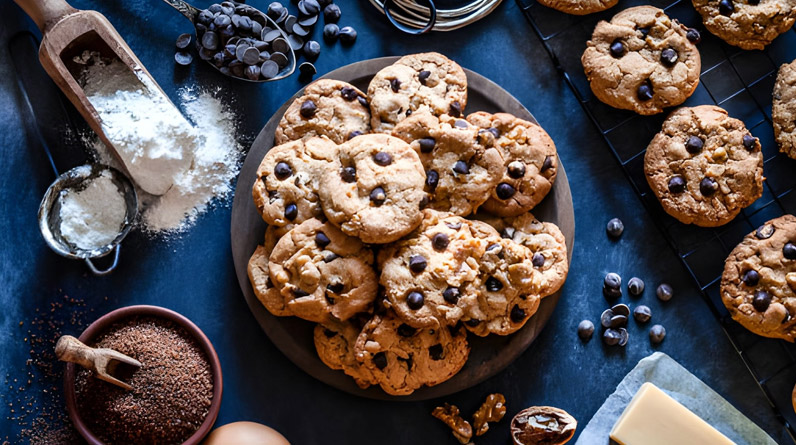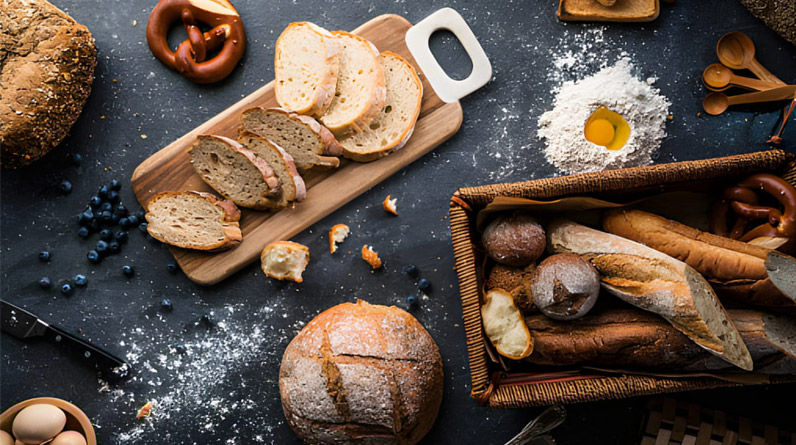Indian bakers have a unique advantage. Your kitchen is already stocked with ancient grains, traditional sweeteners, and regional ingredients that modern wellness enthusiasts are desperately seeking. Yet many Indian home bakers and professionals continue using refined maida, white sugar, and excess butter—not because they’re better, but because they’re familiar.
The baking landscape is changing rapidly. The global healthy baking ingredients market is projected to reach $5 billion by 2025, with significant demand from India’s growing health-conscious middle class. More importantly, when egg costs spiked by 46% in 2024-2025, smart Indian bakers who had mastered substitutions kept their profit margins intact.
This isn’t about compromising on taste or texture. It’s about leveraging what your culture already knows—traditional ingredients that modern science now validates. Let’s explore 10 substitutes that will revolutionize your baking.
Understanding Why Substitutes Matter for Indian Bakers
Indian baking faces unique challenges. Humidity variations across regions affect traditional recipes. Access to specialty ingredients varies dramatically between metro cities and smaller towns. And crucially, many Indian families want healthier versions of traditional baked goods without losing the flavors they grew up loving.
The solution isn’t importing expensive alternatives. It’s rediscovering what your grandmother knew worked.
The 10 Essential Healthy Baking Substitutes
FLOUR SUBSTITUTES: Building a Nutritious Foundation
1. Whole Wheat Flour (Atta) – The Underutilized Powerhouse
This is your easiest win. Unlike popular belief, you don’t need to completely replace maida with whole wheat flour.
| Application | Substitution Ratio | Key Adjustment | Best For |
|---|---|---|---|
| Cakes & Muffins | Replace 50% of maida | Add 1-2 tbsp extra liquid | Chocolate muffins, eggless cakes |
| Cookies | Replace 75% of maida | Slightly shorter baking time | Oatmeal cookies, digestive biscuits |
| Breads | 100% replacement possible | None—texture improves | Rustic breads, sandwich loaves |
Why it works: Whole wheat flour contains 4x the fiber of refined maida. This improves digestion and creates satiety—customers feel fuller for longer. The nutty flavor actually enhances chocolate-based recipes.
Real example: A Bangalore-based home baker reported that replacing just 50% of maida in her eggless chocolate cake reduced customer complaints about dryness while increasing repeat orders by health-conscious customers willing to pay 15% premium.
2. Millets (Jowar, Bajra, Ragi) – Your Ancient Secret Weapon
Millets are having a global moment. What Indian farmers have grown for centuries is now trending in wellness circles worldwide. Use millet flour in cakes, cookies, and traditional Indian baked goods for authentic nutrition.
Substitution method: Replace 30-40% of regular flour with millet flour. The earthy flavor pairs beautifully with:
- Jaggery-based desserts
- Date and walnut cakes
- Coconut macaroons
- Indian-style whole wheat cookies (chikki, barfi-inspired bakes)
Nutritional boost: Millets contain 2x the iron and 3x the magnesium compared to refined flour. They’re naturally gluten-free, making them perfect for customers following gluten-avoidant diets.
3. Almond Flour – Premium Positioning Opportunity
Use this strategically. Almond flour costs more (roughly 3-4x regular flour), so market it deliberately.
Substitution ratio: Use 1:1 but combine with other flours (not alone). Example: 50% almond flour + 50% whole wheat flour creates keto-friendly options you can price at 25-30% premium.
SWEETENER SUBSTITUTES: The Jaggery Renaissance
4. Jaggery (Gur) – India’s Original Superfood Sweetener
This is where Indian bakers have a genuine competitive advantage over global counterparts. Jaggery isn’t just cheaper locally—it’s better for your customers’ health.
| Metric | White Sugar | Jaggery |
|---|---|---|
| Minerals Retained | None (refined) | Iron, Magnesium, Potassium |
| Glycemic Index | 65-75 | 35-55 |
| Flavor Profile | Plain sweet | Caramel, molasses notes |
| Cost per kg (India) | ₹30-40 | ₹40-80 (premium quality) |
How to use: For every 1 cup white sugar, use 1.25 cups grated jaggery. The extra moisture it adds enriches your bakes naturally. This works exceptionally well in:
- Chocolate cakes (jaggery creates deeper, richer chocolate notes)
- Banana breads
- Traditional Indian baked sweets like date and walnut cakes
- Spiced cookies (the caramel notes complement cinnamon and cardamom)
Pro tip: Dissolve jaggery in hot water to remove impurities before using. This takes 2 minutes and ensures smoother batter consistency.
5. Dates – Moisture + Sweetness in One Ingredient
Date paste is the secret weapon that professional Indian bakers aren’t talking about publicly.
Recipe: Soak 1 cup pitted dates in 1 cup hot water for 10 minutes. Blend until smooth. This creates a paste that replaces both sugar AND part of your butter.
Substitution: Replace 1 cup white sugar with ¾ cup date paste + reduce liquid by ¼ cup. The dates add fiber (3.6g per cup), creating baked goods with genuine health benefits.
6. Honey and Maple Syrup – For Premium Recipes
Precise substitution: For every 1 cup sugar, use ¾ cup honey + reduce other liquids by ¼ cup + add ¼ tsp baking soda (neutralizes acidity).
These work best in:
- Premium honey cakes marketed as “artisanal”
- Moist breads (banana, carrot)
- No-bake cheesecake crusts
FAT SUBSTITUTES: Upgrading Your Butter Usage

7. Coconut Oil – 1:1 Replacement with Strategic Benefits
Virgin coconut oil works 1:1 with butter. The key difference? Coconut oil creates crunchier cookies while butter creates chewier ones—customers have different preferences.
Best applications:
- Cookies and biscuits
- Pie crusts (achieves beautiful flakiness)
- Vegan chocolate brownies
Important note: Use virgin coconut oil (has the coconut aroma) only in applications where coconut flavor won’t interfere. Refined coconut oil is neutral and works better in delicate cakes.
8. Mashed Avocado – The Creamy Secret in Chocolate Bakes
This seems counterintuitive, but avocado is the ultimate disguised health upgrade for chocolate applications.
Substitution: Replace up to 50% of butter with mashed avocado. In a 200g butter recipe, use 100g butter + 100g mashed avocado.
Why it works: The cocoa completely masks avocado’s flavor while the healthy monounsaturated fats create incredibly moist cakes and brownies. Customers taste “indulgence” and never realize they’re eating something genuinely good for them.
BINDING & LEAVENING SUBSTITUTES
9. Flax and Chia Eggs – Your Vegan Baking Secret
For every egg you’re replacing, create this mixture:
- Flax Egg: 1 tbsp ground flaxseed + 3 tbsp water. Wait 5 minutes until it gels.
- Chia Egg: 1 tbsp chia seeds + 1 cup water. Wait 10 minutes, use ¼ cup per egg.
Applications: Both work brilliantly in muffins, cakes, and quick breads. Many Indian bakers use these in eggless recipes, which are already popular in India.
Benefit: These add omega-3 fatty acids and fiber that regular eggs don’t provide. Marketed correctly, “omega-3 enriched” bakes justify premium pricing.
BONUS: The 10th Substitute – Milk Alternatives
10. Plant-Based Milks – Future-Proofing Your Bakery
Substitution ratios (all 1:1 with dairy milk):
- Oat Milk: Creamiest texture, best for general baking
- Almond Milk: Lighter, ideal for white cakes and vanilla-based recipes
- Soy Milk: Highest protein, creates better browning and structure in yeasted breads
The global non-dairy milk market reached $36.76 billion in 2025. Offering dairy-free options isn’t future-thinking—it’s current market demand.
Implementation Strategy: Making Substitutes Work for Your Bakery
Phase 1: Start Small (Week 1-2)
Replace just one ingredient in one recipe. Example: Make your chocolate brownies with coconut oil instead of butter. Taste test thoroughly. Document customer feedback.
Phase 2: Test Combinations (Week 3-4)
Once confident, combine substitutes. Example: Whole wheat flour (50%) + jaggery + coconut oil in cookies. Market as “traditional meets modern.”
Phase 3: Scale & Market (Week 5 onwards)
When customers show interest, expand the range. Create a “Healthy Options” section in your menu with clear labeling of benefits.
Critical Adjustments by Indian Climate
India’s humidity varies dramatically. In coastal regions (high humidity), reduce liquids by 1-2 tbsp. In dry regions, increase liquids by 1 tbsp. This single adjustment prevents failure.
Real-World Results: Indian Baker Case Studies
Case 1 – Mumbai Bakery: Replaced 50% maida with whole wheat flour and switched from white sugar to jaggery. Result: 23% higher profit margins (jaggery costs less), 40% increase in repeat customers seeking healthier options.
Case 2 – Bangalore Home Baker: Started using flax eggs in eggless cakes. Result: Could expand market to vegan customers, increased orders by 30%.
Case 3 – Delhi Cafe: Introduced almond flour cookies at 25% price premium. Result: 60% of customers chose premium option, increasing average transaction value significantly.
The Bottom Line: Your Competitive Edge
Indian bakers don’t need to copy international trends. You’re sitting on ingredients that the global wellness market is desperately trying to source. Jaggery, millets, and traditional approaches are your birthright—use them strategically.
These 10 substitutes aren’t compromises. They’re upgrades that create better-tasting, healthier baked goods while improving your profitability. Start implementing today, and watch your customer base transform.
Frequently Asked Questions
Q: Will customers notice the difference?
A: With proper substitution ratios, most won’t notice the difference—they’ll notice the superior taste and how they feel afterward (no sugar crash, better digestion). This is why customers come back.
Q: What if a substitute fails in my first attempt?
A: Failures teach more than successes. Document what went wrong, adjust ratios, and try again. Most professional bakers go through 5-7 testing iterations before perfecting a new substitute.
Q: Are these substitutes more expensive?
A: Locally, jaggery and whole wheat flour are cheaper. Almond flour and specialty milks cost more—but you’ll price them accordingly with premium positioning. Overall, smart substitution reduces waste and improves shelf life, making operations more profitable.
Q: Can I use all substitutes simultaneously?
A: No. Start with one ingredient substitution per recipe. Combining too many variables makes troubleshooting impossible. Build gradually.
Ready to transform your Indian baking? Start with one recipe this week. Choose your weakest-performing bake and improve it using one of these substitutes. Document results. Share with customers. Watch your business transform.









